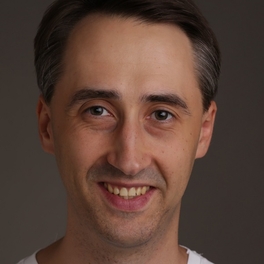Eyes of Metropolis: How the New Scenarios Appear in Video Analytics

In November 2021, analysts from the Innovation Laboratory of the IT Department of the Moscow Government have studied global practices in the use of video surveillance and video analytics systems. Among other things, they analyzed the various areas where such systems are used today and identified seven main application scenarios, that is, six more in addition to security (for which such systems have traditionally been deployed in cities).
The fact that video analytics systems are increasingly being used in the world to solve various problems is also indicated by other studies. According to IT company Surfshark, in 2020, more than half of all existing states (109 countries) have already used or approved facial recognition. In total, 194 states were studied by analysts.
Source: Surfshark (2020)
A similar study was conducted in 2021 by Comparitech, a cybersecurity analytics company. Unlike the creators of the Surfshark map, Comparitech did not limit itself to one source of information per country. The authors compared the top 100 countries by population (excluding the DPRK), noting only the use or non-use of facial recognition, but also assessing how widely this technology is used in various fields. According to the data received, 7 out of 10 governments widely use facial recognition, more than 40% of countries have used such video analytics as part of their measures against the spread of COVID-19.
Source: Comparitech (2021)
Urban video analytics with facial recognition has evolved from conventional video surveillance, which has been actively implemented since at least the 1980s. According to IHS Markit analysts, 1 billion surveillance cameras should have been installed in the world in 2021. And due to the use of new technologies, their functionality is significantly expanded.
A wider look at the goals
Initially, the purpose of video surveillance was to ensure security, which was achieved largely due to the psychological effect — the feeling of the inevitability of punishment for the offender (later, separate studies pointed to the ambiguous effectiveness of video surveillance specifically for “crime prevention”). However, with the development of video analytics in the field of public safety, new opportunities have appeared: for solving crimes, detaining wanted criminals, and reducing the number of accidents.
Professor Fraser Sampson, Commissioner for Biometrics and Video Surveillance for the UK Government, notes “the rapid evolution towards so-called omniveillance”. This marks the end of a stage where, according to Accenture analysts, “data is typically stored in silos, making it difficult to create a broader and more comprehensive picture of a particular situation but some cities begin to leverage emerging technologies to manage mundane public safety tasks.” The next phase, expected by 2025, is characterized by “a mass real-time-oriented public safety ecosystem where through AI, police can see the unseeable,” the British expert continues, citing an Accenture forecast from 2018.
Source: Accenture (2018)
As Andrey Telenkov, CEO of NtechLab, emphasizes, customers "began to look at the functions of video analytics more broadly, that is, video surveillance systems are no longer just a security tool." Today, in cities, cameras perform functions in housing and communal services, education, healthcare, transport, emergency services, as well as virtual tourism:
Source: Innovation Lab of the IT Department of Moscow Government (2021)
New scenarios for the use of video surveillance and video analytics appear in modern cities in different ways, this also depends on the size of the city and its internal organization. “The big metropolises have departments and resources to investigate new solutions and define a plan to implement them, they might also have universities and local startups proving valid inputs,” says Andrea Sorri, Smart Cities Development Manager at Axis Communications, Swedish manufacturer of network cameras and surveillance systems. He adds that “for medium and small size cities, private companies play a key role in informing and proposing new solutions to the city authorities.”
Synesis (the Belarusian creator of the Kipod video analysis system) and Tevian (the Russian developer of computer vision and video analytics systems) agree that the formation of new urban scenarios for the use of technologies is a two-way process, a symbiosis of city demand and market proposals.

Vadim Konushin
CEO of Tevian
Andrey Telenkov, CEO of NtechLab, a developer of facial recognition technology, says that the primary request is from those cities whose administrations have specific tasks that need to be addressed. As examples of such tasks, he cites the timely provision of medical care to citizens and garbage collection. “In the first case, the system is able to recognize a person falling on the street and send a signal to the rescue services, and a smart barrier can recognize an ambulance and let it into the yard,” he explains. “In the second case, the system allows us to analyze the level of filling of garbage containers near residential complexes, so that the departure of the car is as efficient as possible.”

Andrei Telenkov
CEO of NtechLab
The system for determining the silhouettes of people developed by the company will be introduced into the capital's video surveillance system. In an interview with ICT.Moscow, Dmitry Golovin, the Head of the City Video Surveillance Department of the IT Department of Moscow Government, gave examples of several tasks that intelligent video analytics can solve, including the formation of heat maps of people's movements that will help in the design and development of the city's infrastructure. Other video analytics algorithms are planned to be used to identify violations in the maintenance of the road infrastructure (for example, erased markings), as well as to create services directly for residents.

Dmitry Golovin
Head of the City Video Surveillance Department of the IT Department of Moscow Government
When creating such services, the expert adds, special attention should be paid to a detailed study of use cases and security issues, determining the main users in whose interests it is planned to launch a new service, and key indicators.
The private sector, in turn, sees that more and more cases and scenarios for the use of video analytics are being developed and offered by vendors. Dmitry Markov, the Head of VisionLabs, told ICT.Moscow about this, saying that “with the development of technology, the number of solutions for a smart city is growing, so the importance of technological expertise is growing.” Anton Pronin, Director for Acceleration Programs of the Information Technology Cluster of the Skolkovo Foundation, notes that “the customer has become more qualified” and is investing more actively in video analytics, as pilots and test sites in previous years have shown the effectiveness of AI technologies.
The demand for new video analytics
The growing number of scenarios using video analytics suggests that the demand for such solutions is growing in the market, and other technologies are also actively used in the solutions themselves. Interlocutors of ICT.Moscow agree on this.
For example, a representative of the MTS StartUp Hub shared his observations: the company sees a growing demand for video analytics, and the number of such requests in the first half of 2021, according to company experts, increased by almost one and a half times — by 40%. Anton Pronin from Skolkovo notes that video analytics and artificial intelligence technologies in the field of pattern recognition are now generally “in the very top of the innovative attractiveness among all AI technologies.”

Anton Pronin
Director for Acceleration Programs of the Information Technology Cluster of the Skolkovo Foundation
MTS StartUp Hub calls the use of hybrid video analytics solutions “the industry norm”. Zaur Abutalimov, Product Director of Ivideon, gave an example of such ICT.Moscow hybrids — these are drones with a video surveillance function. From his point of view, such devices are especially in demand in the context of solving urban problems, for example, on geographically extended objects. It should be noted that such demand is observed not only by Russian, but also by European experts, including a representative of the Swedish Axis Communications.

Smart Cities Development Manager at Axis Communications
The solution of these and other urban problems, in turn, stimulates the use of other technologies. MTS StartUp Hub notes the growing need of customers for “non-standard, out-of-the-box analytical algorithms related, for example, to recognition of personal protective equipment, safety compliance and worker behavior, quality assessment and product counting.” On the other hand, VisionLabs is seeing interest in multi-camera tracking technology.

Dmitry Markov
CEO of VisionLabs
According to the expert, in a modern city this technology allows solving problems in two main areas: security and space optimization. “In the first case, we can build a path to search for a lost person or a criminal,” explains Dmitry Markov, the Head of VisionLabs. “In the second, taking into account the routes of people, choose the arrangement of stops, the number of buses on the route, the required mode of operation of traffic lights, and so on.” In other words, the technology makes it possible to implement solutions at least in the scenarios of security, public transport and emergency services, that is, in three out of the seven identified by experts from the IT Department of the Moscow Government.
The way to video analytics
A natural question arises: what mechanisms exist to meet the growing demand for a technology that is now actively developing? This issue is especially relevant given the fact that the creation of finished products in the field of video analytics requires large amounts of specialized data, including solving specific city problems.
At least two directions can be distinguished here: scaling up solutions created by large companies (for example, this was done by M.Video-Eldorado, Russia's leading e-commerce and consumer electronics retailer), and bringing startup developments to the market. In the second case, several scenarios are also possible. On the one hand, new companies often enter the market for a specific case — this was noted by Tevian's CEO Vadim Konushin at the Moscow conference Video Analytics: Development Trends and Growth Drivers in September. On the other hand, there are accelerators for this.

Zaur Abutalimov
Head of Products at Ivideon
Retailer X5 Group was holding X5 Pitch Day last year to search for innovative solutions, while the scouts of the MTS AI Center, as the company told ICT.Moscow, are looking for promising startups around the world with an emphasis, among other things, on projects in the field of video analytics.
When it comes to data, the question remains open. Andrey Telenkov, the CEO of NtechLab, in a conversation with ICT.Moscow mentioned that the analysis of data obtained using intelligent video surveillance systems to improve urban infrastructure is one of the scenarios that are of great interest both in Russia and the world.
on this theme:
3G Stays in Russian Cities till 2025
Kommersant
By clicking the button you agree to Privacy Policy
Supported by the Moscow Government
Content and Editorial:tech@ict.moscow




